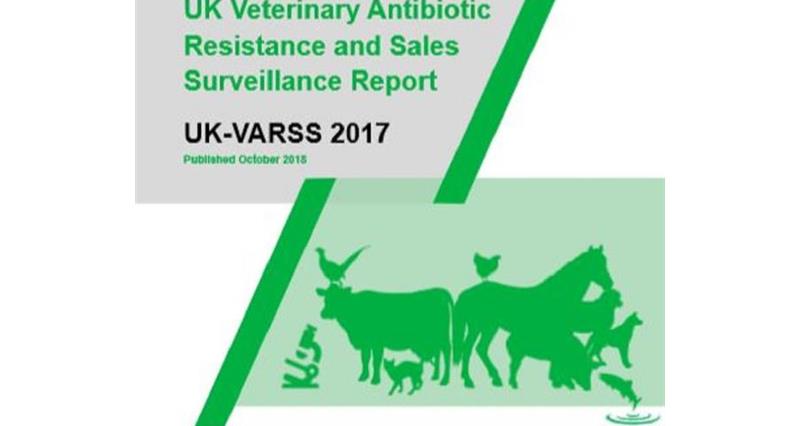The new data released on 24 October by the Veterinary Medicines Directorate (VMD) in its 2017 Veterinary Antimicrobial Resistance and Sales Surveillance (VARSS) report means that sales of veterinary antibiotics for use in farm animals have fallen by a total of 40% since 2013, and now sit at 37mg/kg.
Read the VARSS 2017 highlights here
The VMD’s surveillance programme also shows that resistance to antibiotics in bacterial isolates taken from food-producing animals remains low for most antibiotics, and is absent for others.
Read the topline stats from the VARSS 2017
RUMA chair Gwyn Jones says,“Because a large percentage of products are used to treat multiple species of animal, figures for actual use by species, on farms, are critical to understand patterns in individual sectors. They are also needed to help those sectors to monitor, improve and get recognition for their achievements – and to meet their 2020 antibiotic use targets".
He says most of the reductions over the past few years have come from first the poultry meat sector, then pig and gamebird sectors, which have all released comprehensive usage figures covering almost all their producers.
“Recent studies have also suggested that while few antibiotics are used in the best dairy operations, a small number of farms could be responsible for a large portion of use. Improving the quality of data collection can only help us better understand where we really are, and inform and advise those who need to change their practices.”
One solution to the small datasets for beef cattle for instance, could be around the corner in the form of an electronic Medicine Book (eMB) for cattle. Currently being run as a pilot project at the Agriculture and Horticulture Development Board (AHDB), eMB-Cattle is being modelled on the successful eMB-Pigs, which – based on a Red Tractor assurance requirement – has secured antibiotic usage data for around 90% of the national pig herd in 2017.
In the meantime cattle and sheep farmers have responded positively to the call for responsible use, and individual veterinary practices, assurance schemes, retail supply chains and consultants have launched initiatives over the past two years to support them.
RUMA will cover many of these initiatives in a ‘Targets Task Force: One-Year On’ report on progress against sector-specific goals, due to be released in November.
VARSS 2017 topline stats
- 2017 sales of veterinary antibiotics in food producing animals – 37mg/kg.
This is an 8mg/kg drop from 2016 (18% fall) and 25mg/kg drop from 2013 (40% fall).
- Sales of High Priority Critically Important Antibiotics (HP-CIAs) dropped by 0.86 tonnes (29%) from 2016, which was already a low level.
An overall drop of 2.35 tonnes (52%) from 2013 to 2017.
- Antibiotic usage data was collected from the pig, poultry meat, laying hen, gamebird, salmon and trout sectors. Some data was also collected from the dairy and beef sectors.
- Bacteria resistant to antibiotics taken from food-producing animals remains low for most antibiotics, and is absent for others.
